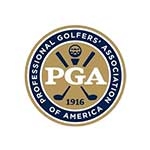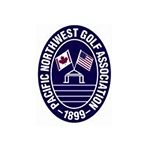Rule of the Month: Seeing Red (and Yellow)
Penalty Areas
Areas of the course formally known as water hazards and lateral water hazards are now referred to as penalty areas. While there are still two colors differentiating the type of penalty area, the Committee in charge of the course or competition has greater liberty to use red markings to provide the player with an extra relief option. Additionally, the Committee may now mark any area of the course as a penalty area, such as extreme rough where a ball is often difficult to play.
One note of caution -- in the past, both water hazards and bunkers were clumped together under the definition of hazards. Penalty areas and bunkers now have separate Rules regarding play and relief options. The word “hazard” doesn’t exist in the new Rules.
Test your knowledge of penalty areas with the following quiz.
Questions: True/False
- If a ball lies partially in the general area of the course and partially in a penalty area, the ball is treated as in the penalty area.
- A player must not ground his or her club before making a stroke in a penalty area.
- Loose impediments that are in the same penalty area as the ball must not be moved.
- For a ball that hasn’t been found, the player must have knowledge or virtual certainty that the ball is in the penalty area before using the relief procedures provided under Rule 17.
- When a ball is in either a red or yellow penalty area the player may, under the stroke-and-distance option, play from where the previous stroke was made.
- The back-on-a-line relief option may be used for yellow or red penalty areas and allows a player to select their own reference point for relief.
- The lateral relief option consisting of dropping a ball within two club-lengths of where the original ball last crossed the edge of the penalty area may allow the player to drop on the putting green side of a yellow penalty area.
- Both the back-on-a-line and the lateral relief options prohibit the player from dropping in and playing from the same penalty area.
- If the player has interference from an animal hole when playing a ball inside a penalty area, he or she may take free relief but must drop the ball in a relief area inside the penalty area.
- A ball embedded in the ground in a penalty area may be lifted, cleaned and dropped in a relief area, with no penalty, but must be dropped in the same penalty area.
Answers:
- True. Rules 2.2c and 17.1a. If any part of the ball touches a penalty area, it is treated as lying in the penalty area. This is true no matter which part of the course the rest of the ball lies in.
- False. Rule 17.1b. The new Rules allow a player to do some things in a penalty area that were previously prohibited, and grounding the club and taking practice swings in a penalty area are two actions that are now permitted.
- False. Rule 15.1a. As stated above in answer #2, a player may do everything allowed in the general area of the course including removing loose impediments. The player should use caution when doing so near the ball as causing the ball to move when removing the loose impediment will result in a penalty.
- True. Rule 17.1c. In order for a player to proceed with relief from a penalty area, the player must have knowledge or virtual certainty that the ball is in the penalty area. Virtual certainty is defined as 95% likely that the ball is in the penalty area. If the player doesn’t have knowledge or virtual certainty that the ball is in the penalty area, the ball is considered lost and the player must play under stroke and distance from where the previous stroke was made.
- True. Rule 17.1d(1). A player may, at any time, play from where the previous stroke was made. This option comes with a one-stroke penalty and Rule 14 explains how the ball must be put into play.
- True. Rule 17.1d(2). This option gives the player the opportunity to select the distance which he or she will play from, keeping the hole in line with where the ball last crossed the edge of the penalty area and backing up on this line as far as the player wishes. A reference point is then selected and the player must drop within one club-length of this spot, but not closer to the hole. This option allows the player’s relief area to be in any area of the course except the same penalty area from which relief is being taken.
- False. Rule 17.1d(3). The option allowing a player to drop within two club-lengths of where the ball last crossed the edge of the penalty area is available only when the ball is in a red penalty area.
- True. Rule 17.1d(2) and (3). Both of these options require the player to take relief outside the penalty area. After dropping a ball outside the penalty area, the player may play the ball, without further penalty, even if the penalty area interferes with the player’s stance or swing.
- False. Rule 16.1a(2) When a ball is in a penalty area, the player is not allowed relief for an abnormal course condition including an animal hole, temporary water or an immovable obstruction.
-
False. Rule 16.3a(1). Similar to answer #9. When a ball is embedded in a penalty area, the player must play it as it lies or take penalty relief under Rule 17. Free relief for an embedded ball is not available.









